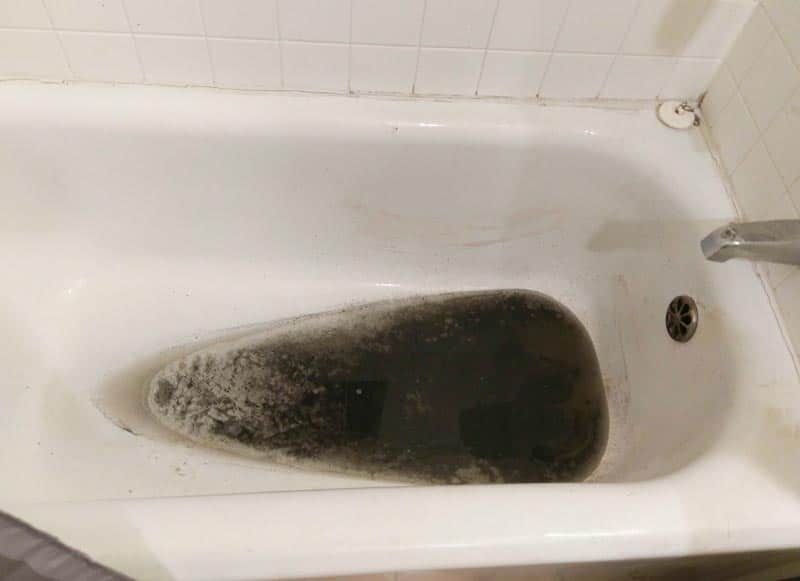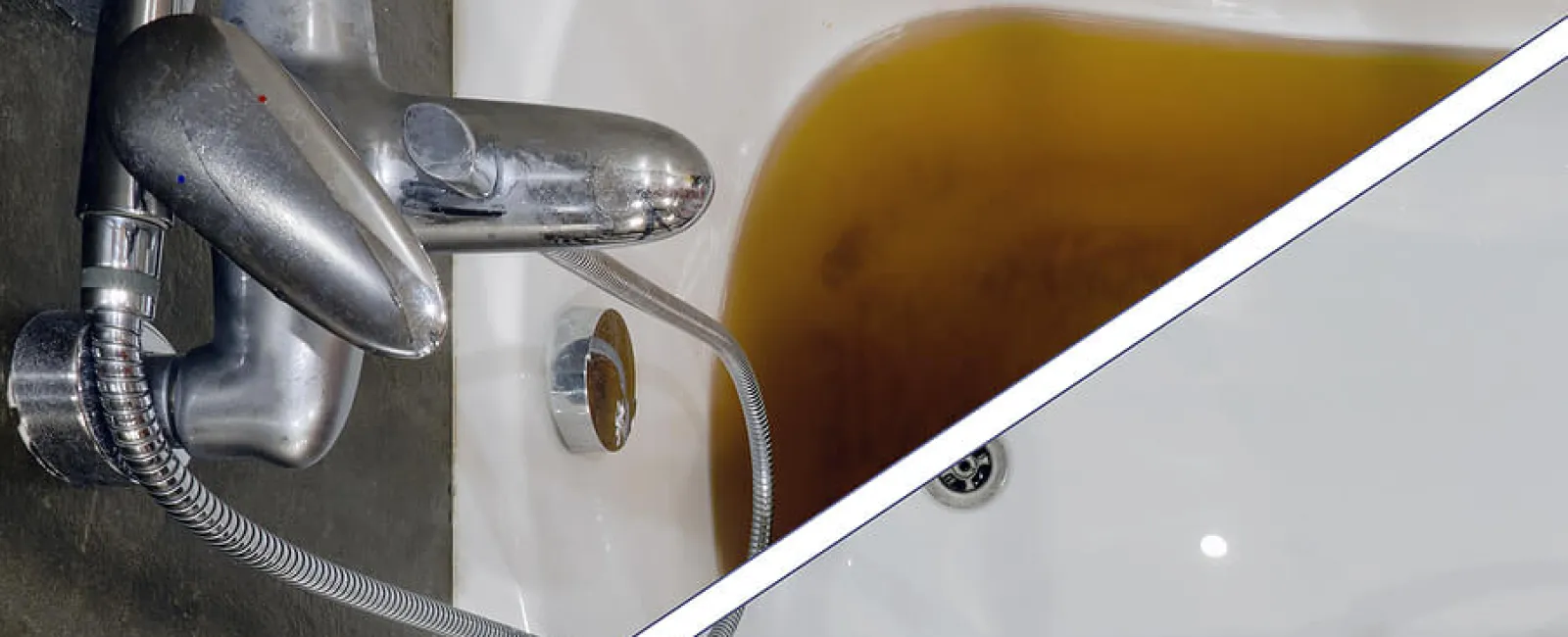Your Comprehensive Guide: Discharge Rising Through the Bathtub
Your Comprehensive Guide: Discharge Rising Through the Bathtub
Blog Article
They are making a few good pointers on the subject of What To Do If Sewage Starts Backing Up Into the Shower in general in the article below.

Sewage back-up in the tub can be a stressful and unhygienic trouble for any type of homeowner. Not only is it bothersome, but it also presents significant wellness dangers and shows underlying problems with the plumbing system. Comprehending why sewage is showing up via the tub is essential for taking ideal activity to address the problem successfully.
Introduction to the Concern
Usual Reasons for Sewer Back-up
Blockages in the Sewage System Line
One of one of the most typical causes of sewage back-up is a clog in the sewer line. This can occur because of the build-up of debris, oil, or foreign items in the pipelines, stopping appropriate circulation and causing sewage to support into your bathtub.
Tree Root Intrusion
Tree origins looking for moisture and nutrients can infiltrate sewer lines via small cracks or joints. Gradually, these origins can grow and broaden, creating considerable damages to the pipelines and bring about sewage back-up issues.
Understanding the Problem
When sewage starts backing up into the bath tub, it's a clear indication of a trouble with the drainage system. The wastewater that must be streaming away from your home is rather locating its back into your living space, which can cause considerable damage and health hazards.
Possible Causes
Several elements can add to sewage backup in the bath tub. From clogs in the sewer line to problems with the plumbing framework, identifying the source is important for locating a remedy.
Aging Infrastructure
Older homes might have obsoleted plumbing systems that are much more vulnerable to deterioration, fractures, and deterioration. As pipes age, they end up being a lot more susceptible to leaks and obstructions, raising the possibility of sewer back-up events.
Heavy Rainfall or Flooding
Throughout periods of heavy rainfall or flooding, the sewer system may become overloaded with excess water, causing backups and overflows. This can cause sewage supporting right into tubs and other components inside the home.
Indications of Sewer Backup
Foul Odors
Unpleasant odors rising from drains or components, especially in the bathroom, may indicate sewer back-up problems. These odors are frequently solid and consistent, signifying a problem that needs prompt focus.
Slow Draining Fixtures
Tubs, sinks, and bathrooms that drain pipes slowly or otherwise in any way could be experiencing sewer backup. If numerous components are affected all at once, it's most likely that the concern originates from an usual point, such as the primary drain line.
Gurgling Sounds
Weird gurgling or bubbling noises originating from drains when water is running elsewhere in your home are a measure of air trapped in the plumbing system. This air buildup can result from sewer backup and need to be explored immediately.
Wellness Dangers Related To Sewer Backup
Contamination of Supply Of Water
Sewage back-up can contaminate the supply of water in your house, posing a major wellness risk to you and your family. Exposure to polluted water can result in intestinal problems, skin infections, and other diseases.
Mold Development
Wetness from sewer back-up can develop perfect conditions for mold and mildew development in your home. Mold and mildew spores can worsen respiratory system problems and trigger allergic reactions in delicate individuals, making punctual cleaning important.
Spread of Disease
Sewage consists of harmful bacteria, viruses, and parasites that can create a variety of conditions, consisting of hepatitis, cholera, and gastroenteritis. Coming into contact with sewage or infected surfaces places you at risk of infection.
Tidying up After Sewer Back-up
Sanitation Procedures
Completely sanitize and sterilize impacted locations after sewer back-up to get rid of unsafe bacteria and avoid mold development. Use appropriate cleansing products and safety gear to guarantee secure and efficient cleaning.
Restoration of Impacted Areas
Fix any kind of damages to floor covering, walls, or fixtures triggered by sewage back-up. Depending upon the extent of the damage, you might need to change carpets, drywall, or other materials to recover your home to its pre-loss problem.
Immediate Actions to Take
Turning Off Water Supply
In the event of sewer backup, it's vital to switch off the supply of water to stop additional contamination and damages. Find the main water shutoff valve in your home and closed it off till the issue can be settled.
Calling a Specialist Plumber
Managing sewer backup is not a do it yourself work. Call a qualified plumber with experience in taking care of sewage-related problems to examine the circumstance and perform required repair work or clean-ups.
Staying Clear Of Contact with Contaminated Water
Until the sewage backup is fixed, stay clear of contact with infected water to prevent the spread of microorganisms and virus. Use safety gear if you have to remain in the affected area and wash your hands completely afterward.
Preventive Measures
Normal Upkeep of Sewage System Lines
Schedule regular assessments and upkeep of your sewer lines to determine and attend to possible problems prior to they intensify into significant troubles. This can include clearing out debris, examining for tree root breach, and fixing any type of damaged pipelines.
Installing Backwater Shutoffs
Think about installing backwater shutoffs in your plumbing system to avoid sewer from flowing back into your home throughout durations of heavy rainfall or flooding. These valves instantly close when water starts backing up, securing your residential or commercial property from contamination.
Appropriate Disposal of Household Waste
Prevent purging anything aside from bathroom tissue and human waste down the toilet to prevent blockages and clogs in the drain line. Dispose of oil, oil, and various other household chemicals appropriately to reduce the threat of plumbing issues.
Why Is Water Backing Up in My Bathtub When I Flush My Toilet?
What to do about a sewer line clog
First, don’t bother with plunging. No amount of plunging will dislodge the clog in a sewer line. The clog is too far away. Plungers are for clogs in the toilet itself, not the sewer line. Plus, the most likely causes of a sewer clog are:
Tree roots Flushed toys or feminine products Grease buildup Those items don’t move easily. And in the case of tree roots, the roots need to be cut out of the pipe and the pipe will need to be repaired.
You’ll need a closet auger. A closet auger is a type of plumber’s snake with a protective cover to keep from scratching the delicate porcelain toilet. If the clog is further down, you may need to remove the toilet or use one of your cleanouts to get to the clog.
We also recommend doing a video inspection of the drain to ensure that the cause of the clog has been completely removed. Otherwise, you could have the same problem again in a few days or weeks.
https://mspplumbingheatingair.com/blog/why-is-water-backing-up-in-my-bathtub-when-i-flush-my-toilet

Do you enjoy reading about Why sewage is coming up through your bathtub? Write a remark directly below. We'd be happy to hear your ideas about this blog post. In hopes that you visit us again later on. Loved our review? Please quickly share it. Let other people check it out. Thank you for your time. Please check up our blog back soon.
Click
Report this page